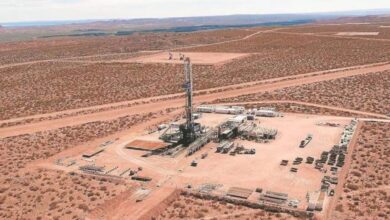Chronicle: This Is How Argentine Inflation Is Experienced In a Buenos Aires Market
"Increasingly more complicated", the food sector resigns itself to Argentine inflation. This is how this situation is experienced in a market in Buenos Aires .

Photo: Freepik
Juan Verano | EFE
Listen to this article
Leer en español: Crónica: Así se vive la inflación argentina en un mercado de Buenos Aires
The usual coming and going of cars loaded with boxes of fruits and vegetables every morning in the Central Market of Buenos Aires seems to happen like a great earthquake announcing the runaway increase in inflation in Argentina, where the price of food and drinks non-alcoholic increased 14.3% in September.
"This is going to increase and it is going to be increasingly complicated," predicts Fabián, a regular agricultural wholesaler at the Tapiales fruit market, in the southwest of the Buenos Aires suburbs.
The food inflation data has a direct impact on the measurement of poverty and indigence in Argentina.
In the first half of the year, poverty in Argentina's urban population stood at 40.1%, while indigence stood at 9.3%.
According to the latest price index report published by the National Institute of Statistics (Indec), the increase in the food division was the one that had the greatest impact in all regions of Argentina in the ninth month of the year , although it was placed 1. 3 percentage points below the increase experienced in August.
The variation in food prices in this segment was only surpassed at the state level by the divisions of 'Clothing and footwear' (15.7%) and 'Recreation and culture' (15.1%).
The basic basket is triggered
Some products in the basic basket such as rice experienced notably high increases, with a kilo of this product standing 26.4% above its value in August.
"Right now the situation is very complicated. The entire economy is very bad. You go to buy a package of sugar at a store and pay double for it," says Fabián.
Precisely, sugar experienced one of the most notable increases in the entire basket calculated by Indec. Each kilo of the sweetener is 14.4% more expensive than a month ago in the country, 8.7 points more than in the month of August.
Read also: Second Debate: This Is The Panorama Of The Elections in Argentina Two Weeks Before
Other basic products such as salt (21.2%), eggs (18.7%), potatoes (14.2%) and bread (13.7%) also followed increases.
But it was in fruits and vegetables – mainly those for export – where the explosion in prices over the past month was most noticeable.
"Now all (those prices) are in dollars," says Fabián when asked by EFE about the high figures for fruits and vegetables, the raw material he trades at his stand.
"Everything that is imported is more expensive, for example the banana that comes from Ecuador," he confirms, getting quite close to the Indec data, which highlights an impressive 46.2% increase in the weight of each kilo of bananas.
On the opposite side of the scale are the cuts of meat indexed by the organization. Roast, minced meat, shoulder, rump and buttock continued to rise in September (around 15%), but they did so at a much lower rate than in August (when they rose around 30% in each case).
An optimistic voice
Faced with Fabián's bad omens, others like Alejandro prefer to be positive.
"There are fewer sales because people cannot buy, but we have faith that we are going to move forward as always," he points out and assures that food is the last product whose purchase consumers reduce.
However, even an optimist like Alejandro recognizes that greengrocers buy fewer and fewer quantities of food for sale, because customers respond increasingly worse to the sector's rising prices.
Less than ten days before the first round of the elections in Argentina, the new inflation figures seem to feel like an earthquake announced in the Buenos Aires market, even after recording its worst two months – August and September added – since the end of summer southern 1991.
Through its corridors, crowded with loading and unloading porters in the early hours of the morning, the feared percentage is just one more figure in the midst of the daily hustle and bustle.




